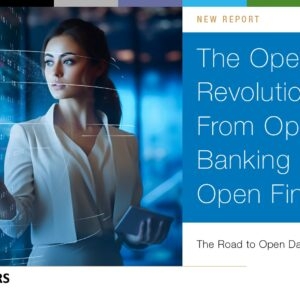
CRIF Live Panel Debate: Open Banking data is ‘powerful tool’ in lending to SMEs and consumers
Ellie Duncan | News
30 Jun 2023
Open Banking data is being used to supplement existing datasets to help make lending decisions, and is a “powerful tool” in forecasting the financial needs of consumers and SMEs, according to panellists taking part in a recent Open Banking Expo Live Panel Debate.
The debate, in association with CRIF, heard from speakers about the main Open Banking use cases in the lending space and about how new revenue streams are being created as a result of the convergence of Open Banking and advanced analytics.

Crif’s Alessandro Vilardi
Alessandro Vilardi, EMEA and Asia digital director at CRIF, said that when traditional sources do not give a clear view of the economic or financial situation of a credit applicant, lenders can ask customers to connect their bank account.
In that way, he said, Open Banking is being used as an “addition to existing data sources, but also as an alternative when it comes to evaluation of a subject without any credit history”.
With Open Banking data coming from different banks and financial institutions, data quality is paramount.
Justin Parr, credit risk leader, at Beacon, said: “You have a number of banks providing this information and standardisation of transaction classifications is not uniform across all those banks. I think we’ll find fintechs rise to the challenge quite quickly and perhaps develop better tooling to standardise…”
But, he added: “It would be better to have some harmonisation at bank level, so maybe there’s scope for improving the structure of Open Banking data as it comes out of the bank, rather than how it’s filtered further downstream.”
CRIF’s Vilardi said that the quality of the data “must be double checked, if not triple checked” and pointed to “advanced analytics and a very powerful categorisation engine” as the key to getting real insights from the data.
Parr and Vilardi were joined on the virtual panel debate on 28 June by Susana Ponce-Froment, Tide’s global head of financial and credit risk, as well as Sujatha Venkatramanan, global head, originations, credit bureau and alternate data at HSBC.

Sujatha Venkatramanan of HSBC
Venkatramanan explained: “The most obvious use case, and the one that’s had maximum take-up, has been in the area of how we improve the customer journey in the credit application process, or the credit onboarding process.
“And that cuts across both individual retail banking, as well as the SME space, both of which had pretty onerous processes in the past – and continue to do so for some segments, such as self-employed applicants, for instance.”
She said that, with SME clients, “very often the challenge is not in assessing a larger SME who has audited accounts” but the challenge is “as you go to the smaller end of SMEs, to the less established companies, it becomes harder and harder to make that risk assessment”.
Venkatramanan said that in Latin America and Asia, this issue is being handled by turning to other sources of data, such as telecoms data and, in China, ecommerce data.
Tide’s Ponce-Froment called Open Banking data “a very powerful tool” in understanding the spending behaviour of a company or an individual.
She said that providers can use analytics, or machine learning models, to build a picture of “the month end position” of an SME which, in turn, “creates an opportunity for a fintech or bank offering loans to offer a loan in advance to a company”.
“We can proactively offer a credit product or some cash management advice… and create new revenue opportunities,” she added.
Watch the Live Panel Debate, ‘Increase the speed and accuracy of your lending decisions’, on demand here.








